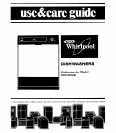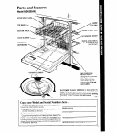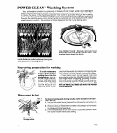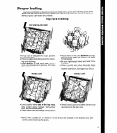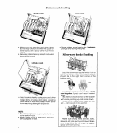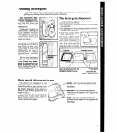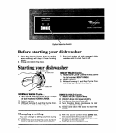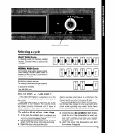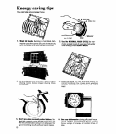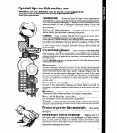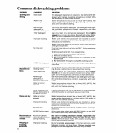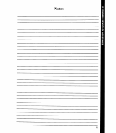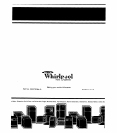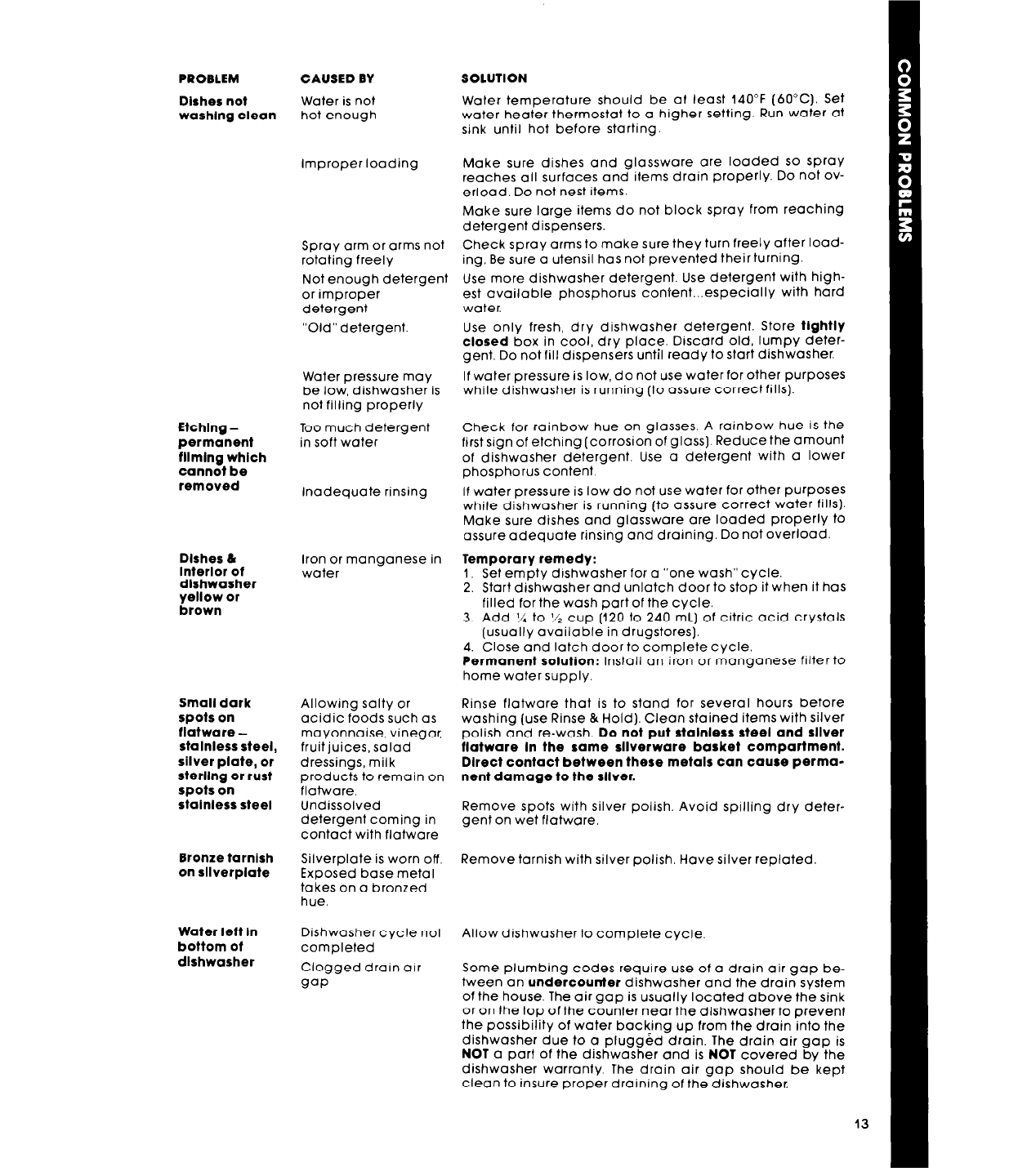
PROBLEM
Dlsher not
washing clean
Etching -
permanent
fllmlng which
cannot be
removed
Dishes 6
lnterlor of
dlshwasher
yellow or
brown
Small dark
spots on
flatware -
rtalnless steel,
silver plate, or
sterllng or rust
spots on
stainless steel
Bronze tarnish
on sllverplate
Water left In
bottom of
dlshwasher
CAUSED BY
Water is not
hot enough
Improper loading
Spray arm or arms not
rotating freely
Not enough detergent
or improper
detergent
“Old” detergent.
Water pressure may
be low, dishwasher is
not filling properly
Too much detergent
in soft water
Inadequate rinsing
Iron or manganese in
water
Allowing salty or
acidic foods such as
mayonnaise, vinegar,
fruit juices, salad
dressings, milk
products to remain on
flatware.
Undissolved
detergent coming in
contact with flatware
Silverplate is worn off
Exposed base metal
takes on a bronzed
hue.
Dishwasher cycle not
completed
Clogged drain air
gap
SOLUTION
Water temperature should be at least 140°F (60°C). Set
water heater thermostat to a higher setting. Run water at
sink until hot before starting.
Make sure dishes and glassware are loaded So spray
reaches all surfaces and items drain properly. DO not ov-
erload. Do not nest items.
Make sure large items do not block spray from reaching
detergent dispensers.
Check spray arms to make sure they turn freely after load-
ing, Be sure a utensil has not prevented their turning.
Use more dishwasher detergent. Use detergent with high-
est available phosphorus content...especially with hard
water.
Use only fresh, dry dishwasher detergent. Store tightly
closed box in cool, dry place. Discard old, lumpy deter-
gent. Do not fill dispensers until ready to start dishwasher.
If water pressure is low, do not use water for other purposes
while dishwasher is running (to assure correct fills).
Check for rainbow hue on glasses. A rainbow hue is the
first sign of etching (corrosion of glass). Reduce the amount
of dishwasher detergent. Use a detergent with a lower
phosphorus content
If water pressure is low do not use water for other purposes
while dishwasher is running (to assure correct water fills).
Make sure dishes and glassware are loaded properly to
assure adequate rinsing and draining. Do not overload.
Temporary remedy:
I. Set empty dishwasher for a “one wash”cycle.
2. Start dishwasher and unlatch door to stop it when it has
filled for the wash part of the cycle.
3. Add ‘/4 to I/’ cup (120 to 240 mL) of citric acid crystals
(usually available in drugstores).
4. Close and latch door to complete cycle.
Permanent solution: Install an iron or manganese filter to
home water supply.
Rinse flatware that is to stand for several hours before
washing (use Rinse & Hold). Clean stained items with silver
polish and re-wash. Do not put stalnless steel and sliver
flatware In the same sllverware basket compartment.
Direct contact between these metals can cause perma-
nent damage to the sllver.
Remove spots with silver polish. Avoid spilling dry deter-
gent on wet flatware.
Remove tarnish with silver polish. Have silver replated.
Allow dishwasher to complete cycle,
SOme plumbing codes require use of a drain air gap be-
tween an undercounter dishwasher and the drain system
of the house. The air gap is usually located above the sink
or on the top Of the counter near the dishwasher to prevent
the possibility of water backing up from the drain into the
dishwasher due to a plugged drain. The drain air gap is
NOT a Part of the dishwasher and is NOT covered by the
dishwasher warranty. The drain air gap should be kept
Clean to inSUre proper draining of the dishwasher



